Move over dogs; isopods are man’s new best friend!
Granted, they’re not the best fetch partners… but these little critters have a lot going for them.
Often inexpensive, easy to care for, and lots of fun to keep – what more could you want? Plus, just like dogs, they come in a wide variety of breeds.
Orange Dalmatians, anyone? (Yes, they’re real isopods).
In this guide, we’ll help you get started with a simple pet isopod enclosure, my picks of the best pet species, and finally, we’ll cover primary isopod care.
Let’s get down to business.

Terrarium Tribe is reader-supported. When you purchase through links on our site, we may earn an affiliate commission (at no further cost to you). 💜
Why Keep Isopods as Pets?
Isopods make great pets for all kinds of reasons.
Whether you’re captivated by their beautiful colors, need a pet that’s forgiving on home space (and your wallet), or just need a good starter pet for your kids – isopods can do all this and more.
1. Fun to collect – Like pint-sized Pokemon, isopods come in all sizes, colors, and vivid patterns. From molten Lava Isopods to cute Rubber Ducky Isopods, there’s something for everyone to get excited about.
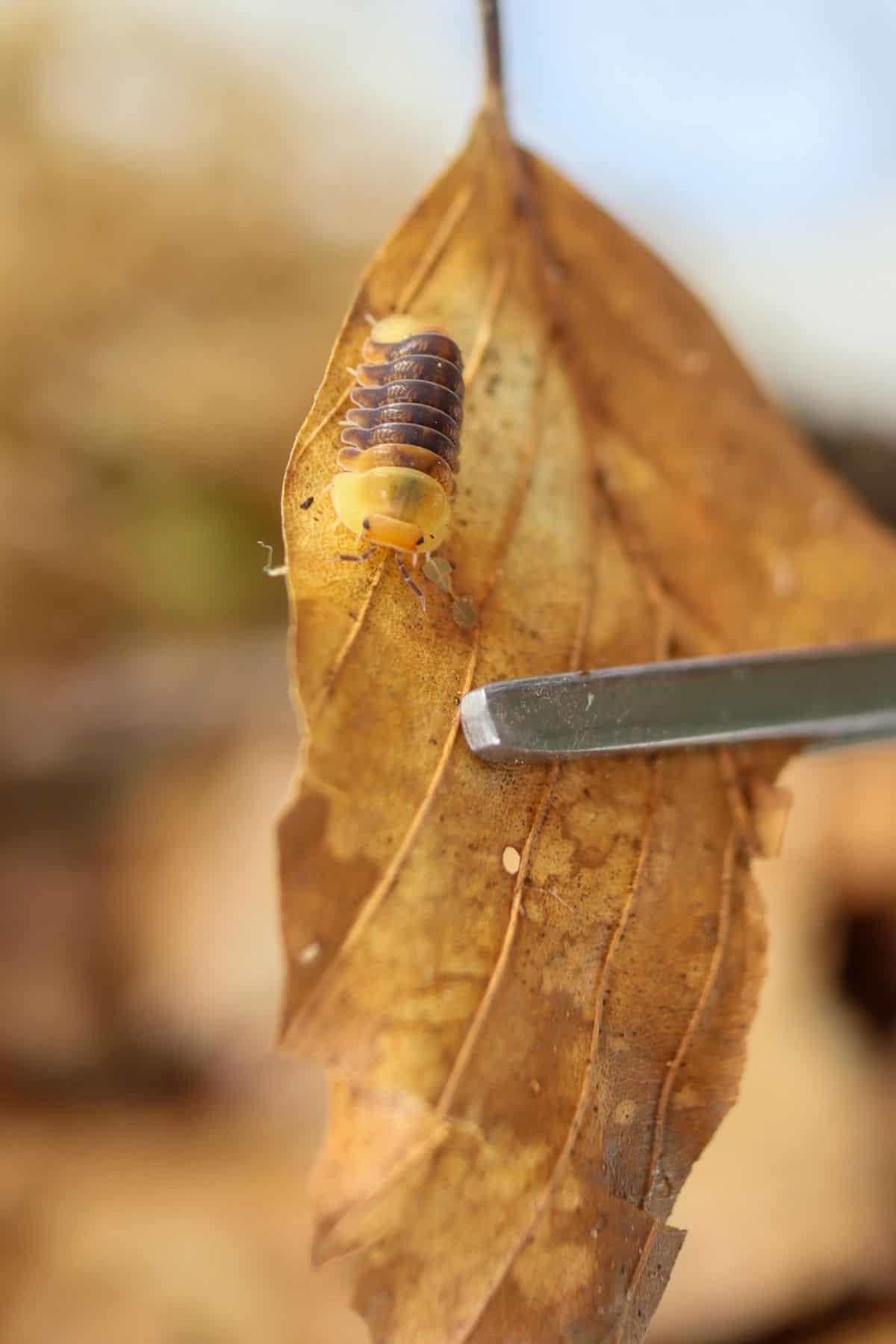
2. Low maintenance – Isopods generally need just the occasional substrate and food replenishment (and they’ll eat anything). Honestly, you can even leave them when you’re on holiday, and they’ll be just fine.
3. Inexpensive choices – The cost of different isopod species varies wildly, but there are plenty of great starter varieties around the $30 mark. Plus, they tend to breed so quickly that you’ll never need to repurchase another culture (unless you want to collect a different one, of course).
4. Fascinating (and easy) to breed – Speaking of breeding, isopods are a practical genetics lesson waiting to happen. Try experimenting with different colors and variations and see what cool new isopods you can produce.
Besides being cute pets, isopods are also incredibly useful as a cleanup crew in bioactive terrariums.
Though this guide focuses on them being the primary inhabitants of an isolated environment, they can make a fantastic companion species in a bioactive setup with other pets.
Need a hard-working crew to keep reptile/other pet animal waste in check? Look no further.
Pet Isopods for Sale – Top Picks
When it comes to pet isopod species, I’m looking at two main features.
Firstly, there needs to be lots of visual varieties to choose from. Collecting cool-looking isopods is often the main – or at least the initial – draw, and I want you to have plenty of choices.
Secondly, they need to be active and bold. It’s no good having a pet isopod that burrows and hides from you all day, right?
The beginner species below are chosen for their adaptability, hardiness, and the fact that they’re cheap.
On the other hand, the rarer species included may come with some additional care requirements to consider ( but their coolness more than makes up for it, in my opinion).
Beginner Isopods
- Armadillidium maculatum – Zebra Isopods are a fantastic entry-level pet isopod species that are available at a very affordable price. For starters, they’re easy to keep, look great, and they’re pretty active throughout the day too. You get a lot of bang for your buck here.

👉 Shop Zebra Isopods (and the vibrant Yellow Zebra Isopods).
- Porcellionides pruinosus – The Powder Blue and Powder Orange Isopods have a wonderful powdered coloring, which displays in many unique ways. They’re used in vivarium environments of all kinds because they’re so adaptable, so they’re excellent choices as reliable pets too.
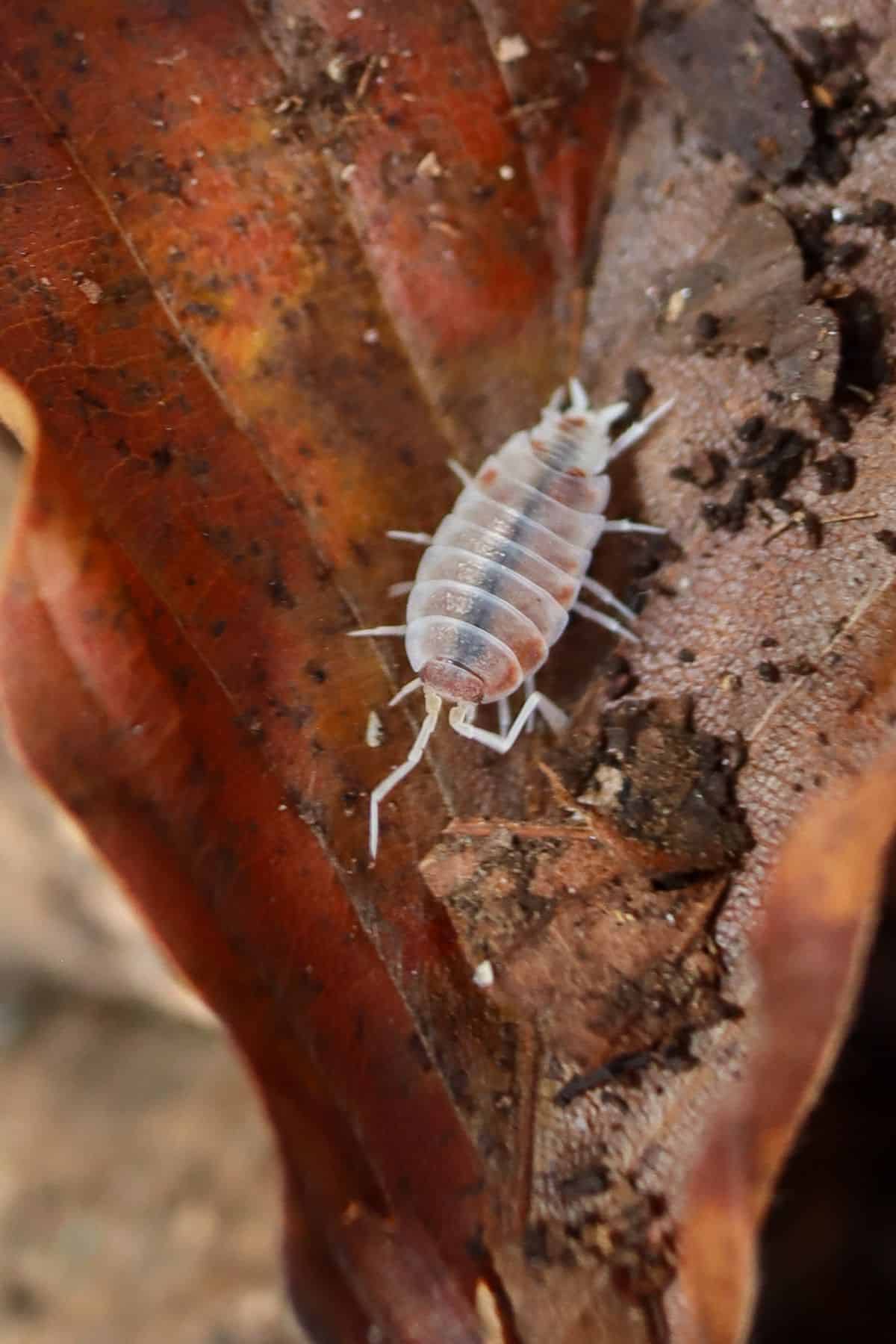
Rare / Advanced Isopods
- Cubaris sp. – The Rubber Ducky Isopod is undoubtedly the hot new isopod (I mean, look at it), but it’s also expensive and more challenging to keep. Instead, I’d recommend starting with the much cheaper and more forgiving ‘Panda King‘ variety.
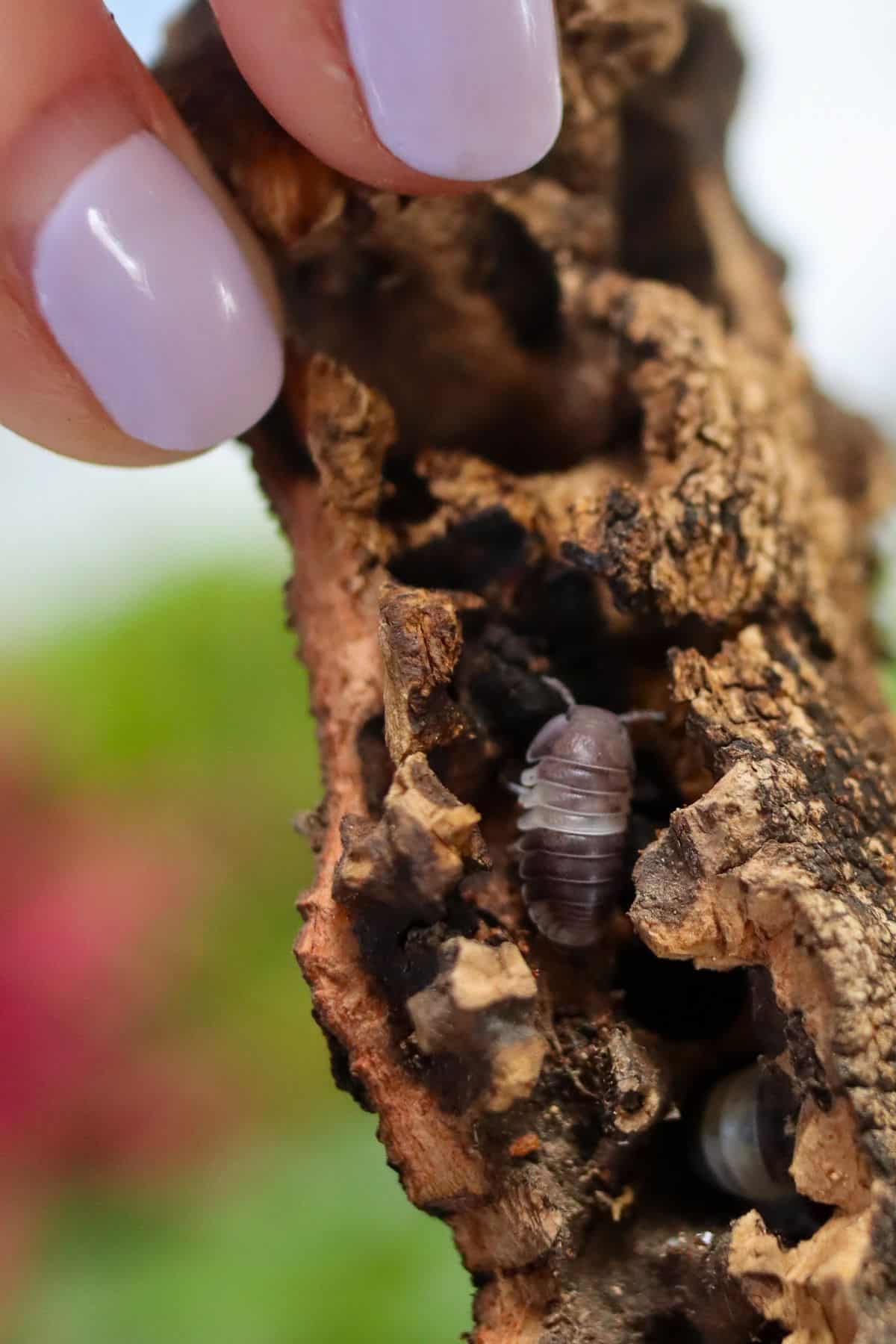
- Armadillidium vulgare – There’s a wide variety of Armadillidium species/varieties on the market (some of them more common than others) but I’m partial to the Magic Potion Isopods and Gestroi are great all-rounders too.

- Or finally, how about Rae’s favorite – the Shiro Utsuri Isopods? These critters are super friendly, adventurous, and honestly pretty forgiving to care for, too.
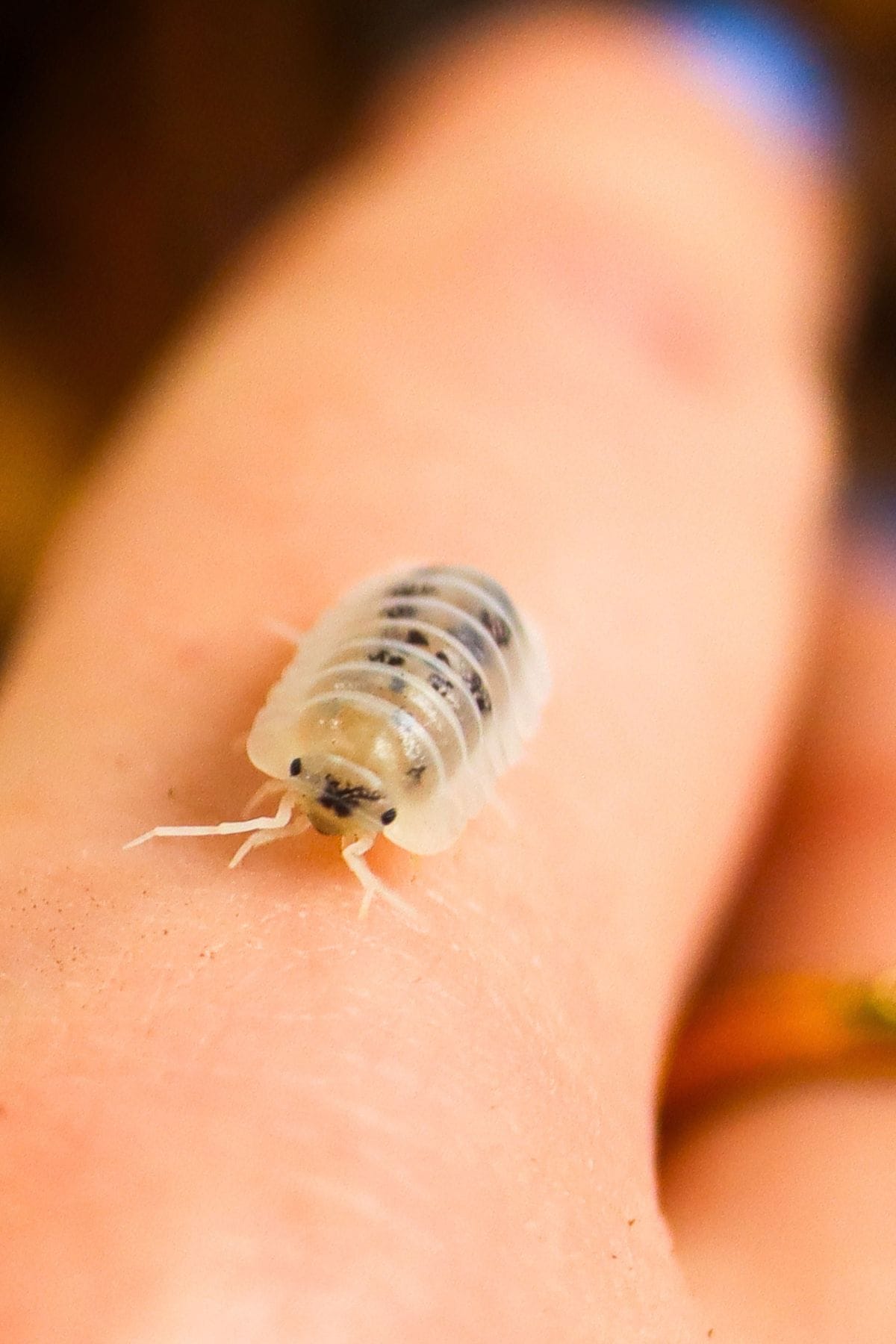
Or, check out our hand-selected range of pet isopods for sale on our store.
With your chosen isopod culture, you’ll get free standard shipping and the necessary supplies to get your isopods off to a good start.
That said, in the long term, you’ll need a suitable isopod enclosure.
Isopod Enclosure Setup
Okay, let’s get to making a home for your new pet isopod.
As a budget option, you can easily get started with a plastic container like a Tupperware box.
The size will depend on your chosen type of isopod, but you can’t go wrong with a shoebox size. Just note that you’ll need to punch some air holes into a typical Tupperware box, as isopods need ventilation.
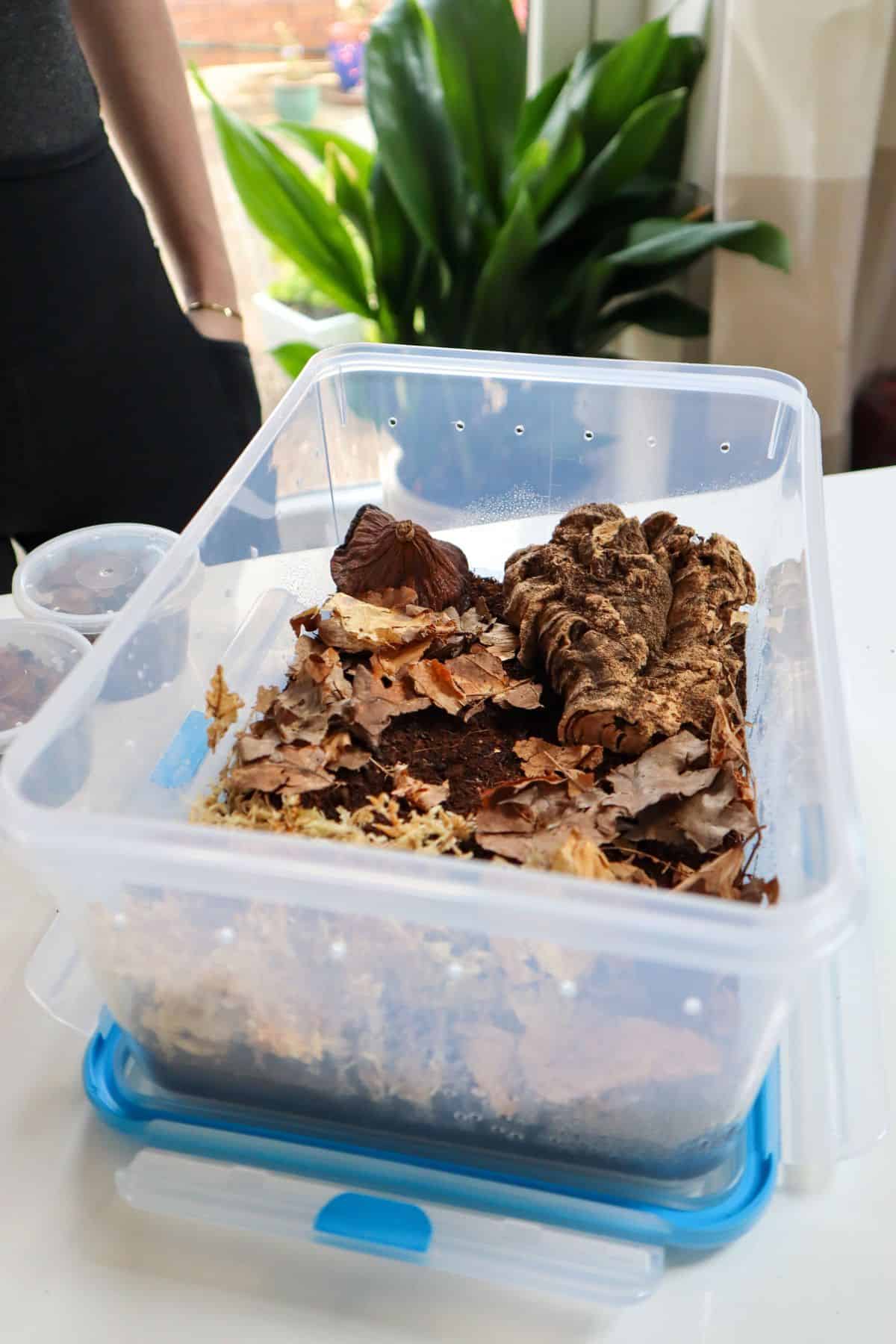
Alternatively, you can purchase a dedicated isopod enclosure. I find that acrylic display enclosures are usually best because they’re lightweight, affordable, and you can easily see your pets at work.
They come with optimized ventilation, a lovely magnetic-lock lid (to ensure there are no escapees), and high-quality, durable construction.
Isopod Substrate Mix and Depth
Substrate choice is critical for isopods.
Of course, they’ll want something they can comfortably burrow and hide in, but they also use it for moisture regulation. Remember, isopods are crustaceans – they need to be able to find regular moisture to survive.
So, you’ll be best off choosing materials that retain plenty of moisture (and ideally can be a food source, too).
If in doubt, a variation of the classic terrarium ABG Mix is an excellent place to start.
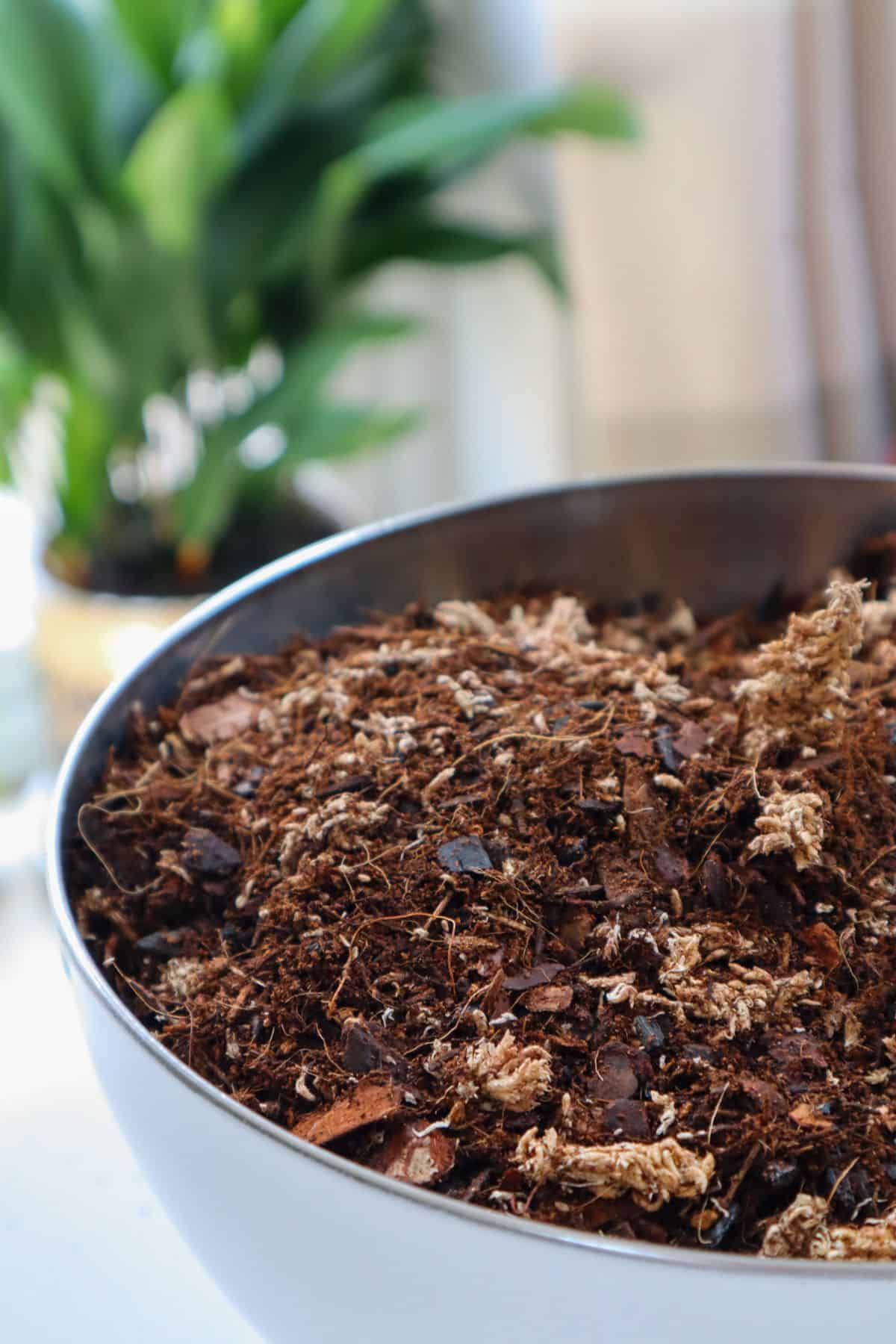
It’s well-balanced for tropical plants, so it has many of the necessary qualities to maintain an isopod culture. That said, it has some redundant extras as far as isopods are concerned, so if you’re making your own mix, I’d recommend just using a few of its components and adding some others.
- Sphagnum moss – This fantastic material can hold an insane amount of moisture. You can distribute these stands amongst the mix, and/or you can add a clump of it to one side of the enclosure. Grab a bag of our premium sphagnum moss here. 👈
- Orchid bark – These small chunks retain moisture, prevent substrate compaction, and provide a food source. A great all-around pick for a natural isopod substrate.
- Tree fern fiber – Here, we have an unusual material that looks like bundles of little sticks up close. It’s not the best for isopods to burrow in, but it’ll provide structure and nutrients.
Peat moss is also a regular part of the mix, and it’s objectively a fantastic material for isopods, but due to its negative environmental impact, I don’t like to use it.
Instead, I’d use earthworm castings. It’s renewable, full of nutrients, and it’s always very well received.
Check out my full guide to isopod substrate for more help, or our tropical substrate mix is always a solid bioactive choice.
What to Add to the Enclosure
Besides the substrate, there are two essential components to add to your enclosure.
First, leaf litter.
As detrivores, isopods love to consume decaying organic matter, and leaf litter is the most convenient and natural source. You’ll need to add a regular supply to keep your critters happy.
👉 You can grab a leaf litter bag from our store.
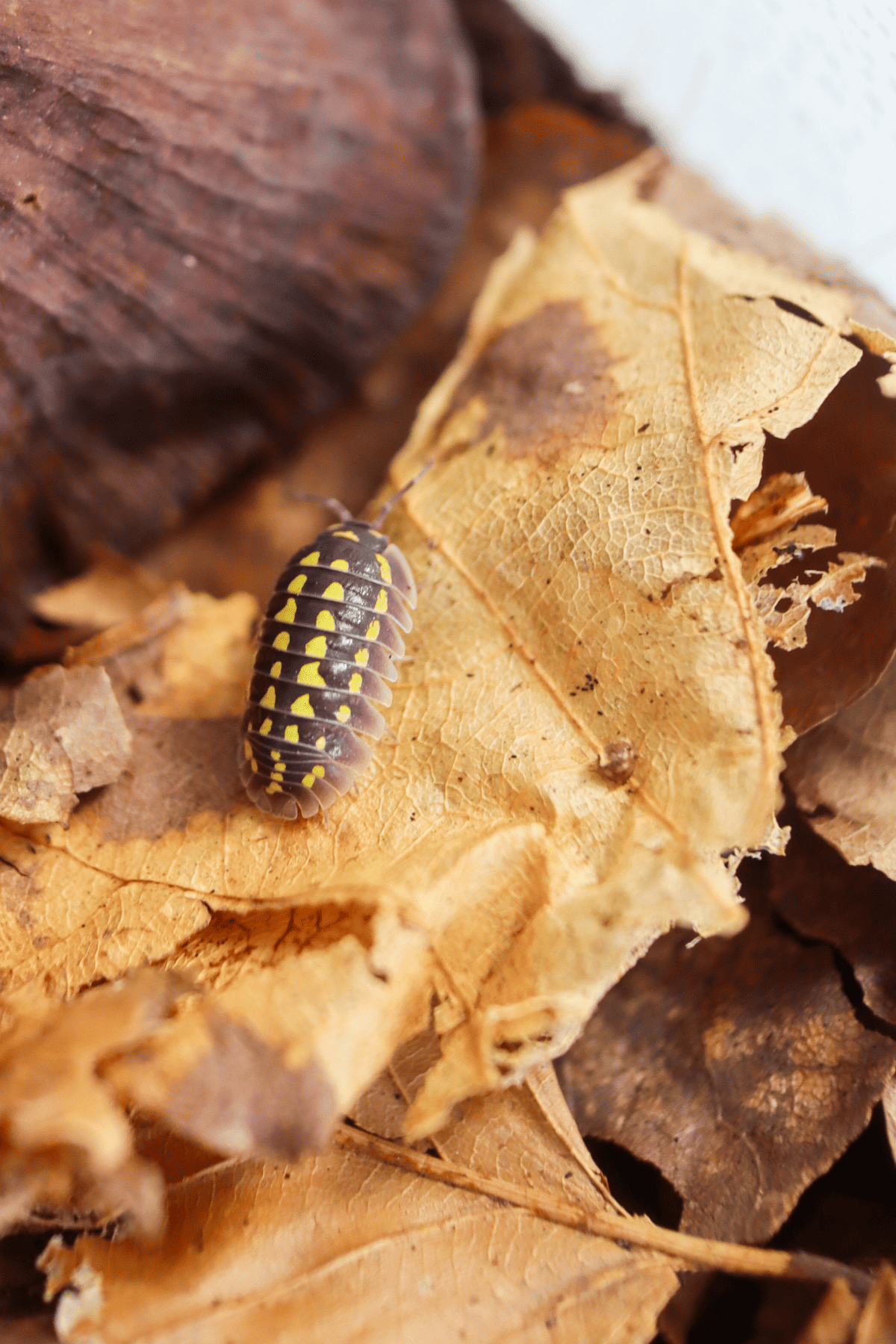
Materials like Cork Bark are amazing, too.
Though not technically a wood, cork bark is a popular material in the hobby for its long-term stability and popularity with isopods. Seriously, your isopods are going to spend a lot of time hiding underneath it.
👉 Shop cork bark (we offer a wide variety of sizes).
Finally, I’d also recommend grabbing a culture of springtails to add to your isopod enclosure.
These bioactive buddies make a great pairing. The springtails will help clear up after the isopods, keeping on top of the mold, excess food, and even pests (like fungus gnats). You can find our springtail cultures for sale here.
Basic Pet Isopod Care
Though every isopod is a little different, the primary care is actually pretty consistent amongst all species.
1. Moisture – You’ll need to keep your enclosure moist by spraying it down with a spray bottle from time to time. Whether you spray down the whole thing or just some areas is down to you (and your isopod choice).
2. Humidity – All isopods need relatively high humidity in their enclosure to breathe (they have gills, after all) and to keep their moisture levels up. That’s why closed containers are best. Some isopods can manage arid conditions for a period if they have a moist area to retreat to, but I wouldn’t test this ability too much…
3. Ventilation – Airflow is essential for supplying fresh oxygen and removing carbon dioxide (pockets of carbon dioxide can spell the end of a colony). Try adding air holes on all sides to maximize airflow. You can cover these with a fine mesh for extra security against climbers.
Some species like to have a moisture gradient, which simply means both a dry and a wet area. This can be achieved easily with a damp clump of sphagnum moss in one corner and then a specified dry patch that you don’t spray down with water.
Simple!
As far as feeding goes, you can also supplement with additional food sources if you like.
Many isopods will appreciate a protein source and (limited quantities of) vegetable scraps. Check the individual species guides on the site to determine if your chosen isopod has any unique requirements.
What About Giant Isopods as Pets?
Well, let’s just call this one a no-go, I’m afraid.
Lots of people seem interested in the marine giant isopods as pets, despite the many apparent challenges associated with keeping a 30cm aquatic creature at home…
It’s undeniably cool, though; I’ll grant you that.
Unless you’re able to recreate the conditions of the Atlantic ocean floor in your aquarium – plus the freezing temperatures and immense deep-sea pressure – it’s pretty impossible.
I’d stick to terrestrial isopods.
What’s Your Favorite Isopod Pet?
There you have it, everything you need to get started with pet isopods.
Which isopod are you going to get started with?
Let me know in the comments.
Or, if you need to start at the beginning, see our What Are Isopods? Guide.

I just learned about isopods from a friend and really wanted one so this helped A LOT!!!
Do you think that rocks would be good for an enclosure? (smooth rocks, no sharp edges)
I don’t see why not 🙂
Many Isopods love limestone, as they can get calcium from it. I found some pieces that had curves to one side and my ispods are often underneath.
Thank you so much!!! Do you have a preferred vendor for springtails? I’m unsure of who to buy from and I keep getting conflicting results.
Hi Parker, our friends at Rubber Ducky Isopods also sell springtails 🙂
How much cold can isopods tolerate? I want to start a small closed terrarium but I live in a very small apartment and sleep with the AC on, it’s usually about 65° at night, but that’s the coldest it gets. Will the plants and critters be okay with that?
It depends on the species really, but I don’t think that’s particularly cold. 🥶
Can different type of isopods be mixed inside one enclosure or should they all stay seperate?
Co-habbing is possible, but more challenging to balance correctly. I wouldn’t recommend it unless you know what you’re doing. It’s not too difficult to keep different types of Armadilidium in one enclosure for example, but mixing species without care and attention can often result in one outcompeting the other.